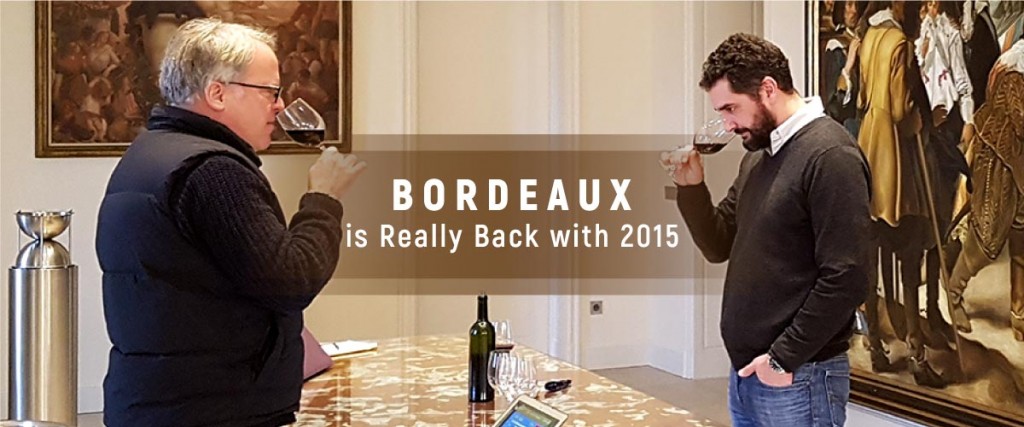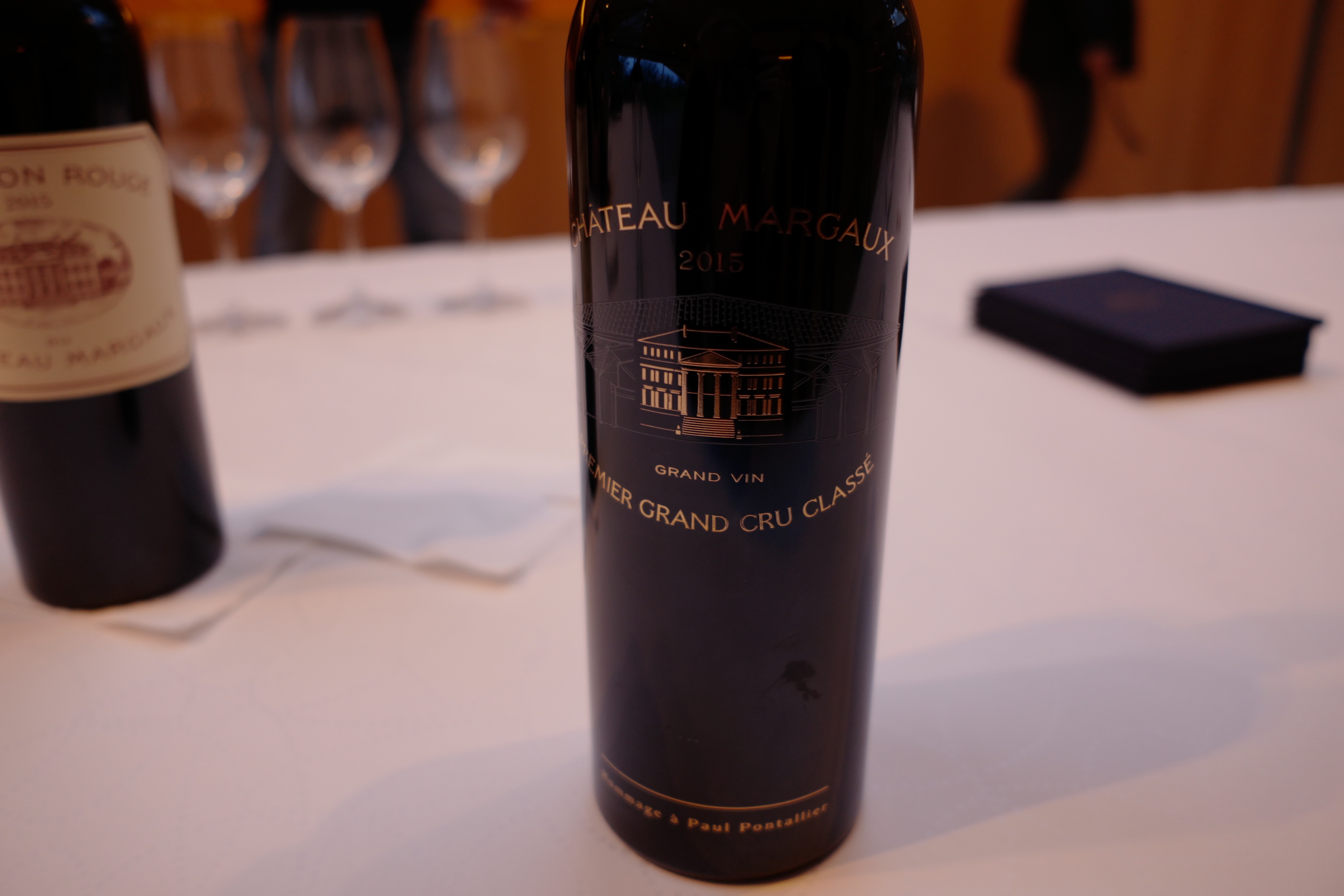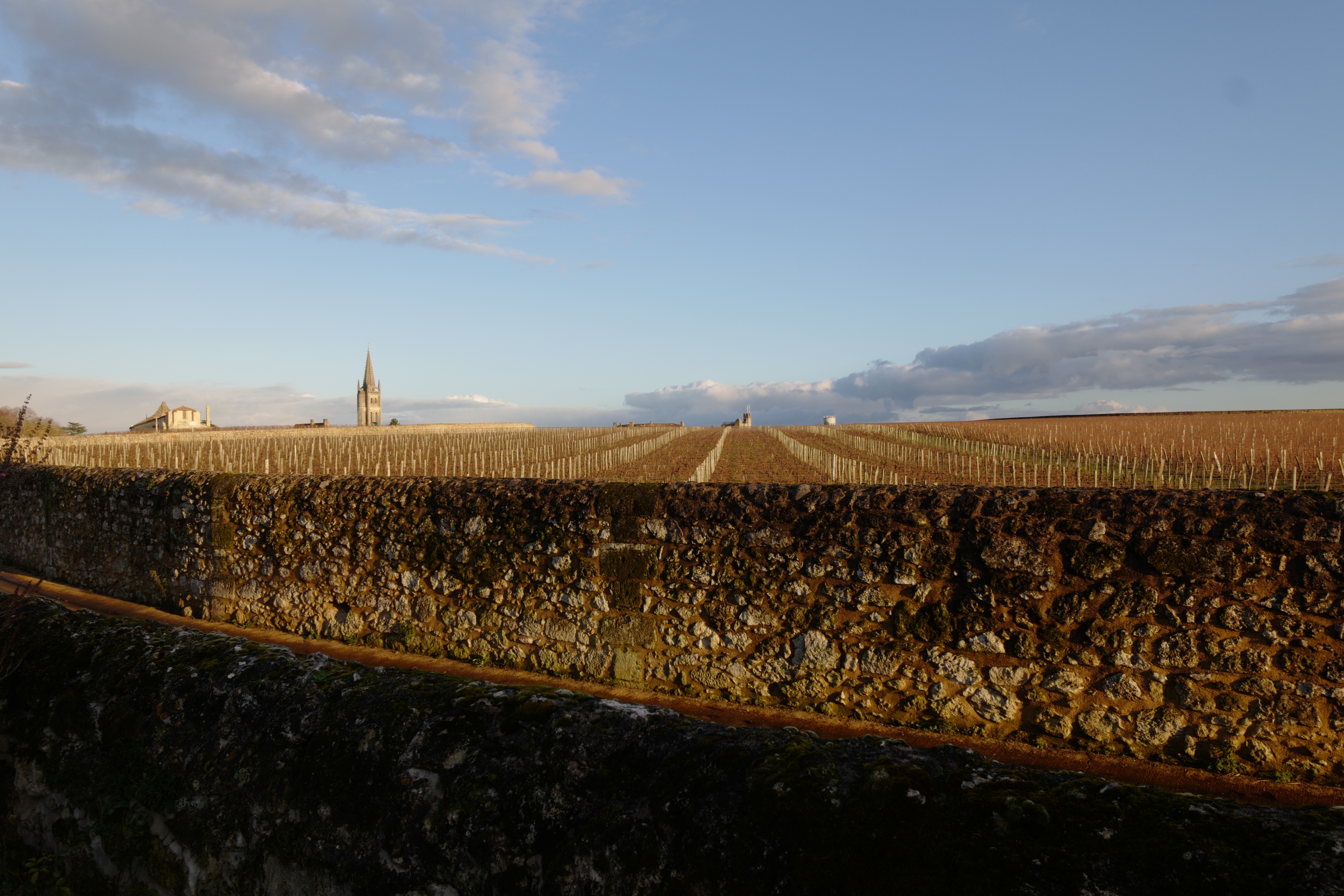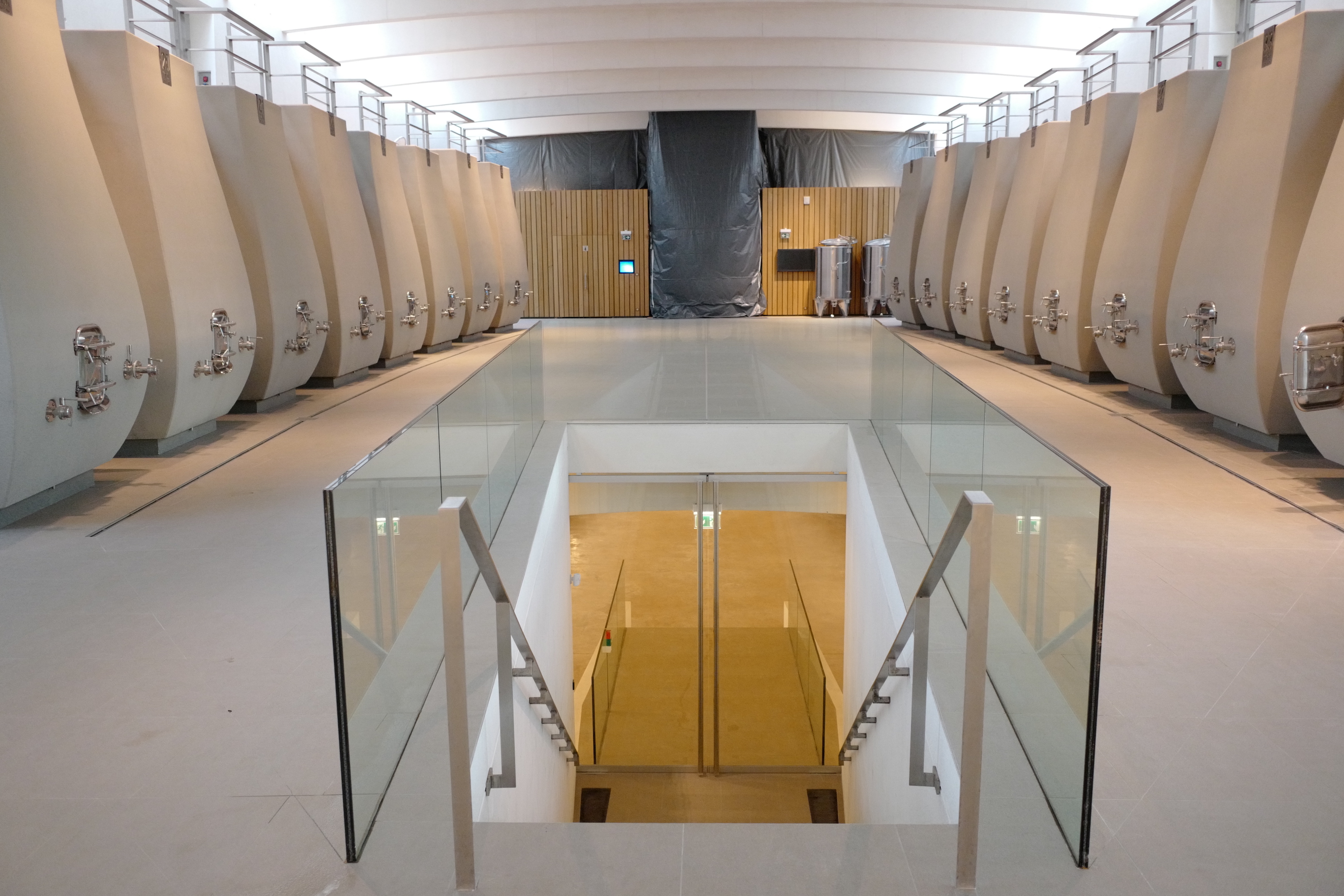
After tasting about 1,300 Bordeaux 2015 in France, my team and I concluded that the 2015 vintage has lived up to its great potential in every sense of the word. Red, white or sweet, the wines show wonderful harmony, intensity, structure and freshness. Exciting and exquisite, the best of 2015s benefit enormously from this freshness quality, which derives from the slightly higher acidity and lower alcohol levels. In comparison to the wines produced in other highly rated years, such as 2009 and 2010, the 2015 vintage’s new gained freshness helps carve out a classic structure and form.
“Sometimes great vintages can be too much but the 2015 vintage has everything in balance in terms of the tannins, fruit and character,” says Thomas Duroux, the general manager of the famous third growth of Palmer in the Margaux appellation. Speaking from experience, Duroux produced a perfect wine in 2015.

Château Margaux’s 2015 packaging features a black label in remembrance of the late Paul Pontallier
To my surprise, I found a total of 14 perfect wines in the 2015 vintage and they are: Château Beauséjour Duffau-Lagarosse, Château Bélair-Monange, Château Canon, Château L’Evangile, Château La Mission Haut-Brion, Château Lafleur, Château Le Pin, Château Margaux, Château Palmer, Château Pavie, Château Pétrus, Château Trotanoy Château Trottevieille Très Vieilles Vignes and Vieux-Château-Certan.
In my almost four decades of wine criticism, this is the highest number of perfect wines I have ever rated. With the great 2010, I gave 11 100-point ratings; and with the superb 2009, I rated a total of 9 perfect wines. Of course, this begs the question of whether 2015 is better than the two modern legends? I’m not sure across-the-board, but I do think that 2015 has truly made phenomenal, transparent wines that emphasize the greatness of their terroirs. This vintage is definitely a new benchmark for Bordeaux.
It is also interesting to note that most great vintages in Bordeaux of the new millennium comes in fives: 2000, 2005, 2010 and now. In terms of nature and quality, I think that 2015 is reminiscent of 2005. Both vintages produced exceptional wines with beautiful balance and finesse, as well as wonderful brightness and transparency.
Looking at the vintage in a historical perspective, I would like to think of 2015 as a new version of some classic years from the 1970s or 1980s, such as 1970, 1971 or 1985, which all share the same balance, structure and freshness. Though I have been professionally tasting Bordeaux since the 1982 vintage, I still vividly recall the tastings. There’s indeed something that strikes a familiar chord about these wines. However, the precision and transparency of these wines can only be considered as very modern.
The preponderance of us tasting top-scoring Right Bank reds with the 2015 vintage — or those with a good percentage of merlot in their blends —underlines how 2015 is a great year for the variety. This was something I found in March 2016 when I tasted them from the barrel in Bordeaux, and it still remains the case.
The best appellations of 2015 are Pomerol and St.-Emilion. The latter’s limestone plateau on which the small, picturesque town is nestled, was ground zero for some of the stars of 2015. You can almost trace a line this vintage between Château Canon (100 points), Château Beauséjour Duffau-Lagarosse (100 points), Château Bélair-Monange (100 points) and Château Ausone (99 points). Pessac-Leognan and Margaux follow closely behind though, and many smaller appellations have also excelled, including Lalande-de-Pomerol and Fronsac.

Chateau Canon was part of a number of estates on St-Emilion’s limestone plateau that secured a coveted 100-point score
“The sign of a great vintage in Bordeaux is when even bad producers make excellent wines,” quips Alain Vautier, the owner of St.-Emilion’s great Château Ausone. But it’s no joke. They are so many excellent wines in 2015, from the top classified growths to simple bottlings.
In general, top chateaux in the Medoc made very high-quality wines despite having to deal with problematic rains before and at the end of harvest. On the other hand, wineries in north of Margaux had to contend with a lot more rain than other parts. Yet, it does seem like the maturation in barrel — or as the French call it ‘elevage’ — had a hugely positive effect on these wines from the Left Bank, considering how they were showing back in spring 2016.
“The wines took on a structure and seriousness with the aging,” says Hélène Genin, winemaker of Château Latour, the famous first growth in Pauillac. “This is what they are supposed to do.”
The fine structure of most 2015 Bordeaux, however, is what makes them so attractive. While many are approachable now as young wines and give great pleasure in the glass, they also have the structure to improve with age in the long-term. This understated style encapsulates the new sensibility in winemaking with the top estates of Bordeaux as they move away from too much extraction, too much oak and picking grapes that were often too ripe. Winemakers are focusing on precision and balance in their winemaking in Bordeaux.

Château Cheval Blanc’s iconic winery in St-Emilion produced in 2015 what was once again one of our top-scoring wines for the vintage
“Maybe we used too much makeup in Bordeaux in the past, but we didn’t in 2015,” insists Jérôme Aguirre, the head winemaker of Vignobles K, which is the company behind names such as Enclos Tourmaline, Château Tour Saint Christophe, Château Haut-Brisson and the recently acquired Château Bellefont-Belcier.
For many, the 2015 will be a new experience in top-class Bordeaux. The best wines don’t have the ripeness of fruit like 2009, nor do they have the tannin power of the 2010s. The 2015 vintage made wines that mirror the character of their unique appellations and vineyards. In other words, wines from Pomerol taste like Pomerol, and wines from Margaux taste like Margaux. They are real Bordeaux. And no place on earth can make reds quite like the 2015s from Bordeaux.
“The 2015 vintage really gives more value to the property instead of just the vintage; it’s a magnificent year,” says Olivier Berrouet, the winemaker of the legendary estate Château Petrus in Pomerol. The 2015 Petrus is a 100-point wine. “We have a notion of maturity but they were harvested at the right time. They have beautiful acidity, and we extracted the right way so you don’t see it.”
Mathieu Chadronnier, the head of one of Bordeaux’s top wine merchants CVBG adds: “There is elegance and freshness to the 2015s — a sense of ease to the wines. It’s a vintage that’s less powerful than 2009 but still so structured. The 2015 vintage is subtler. You see the complexity and intensity in the wines. There is something very chic to them.”
Not only are they chic to drink, but they’re attractively priced, too. The 2015s were sold at substantially lower prices than 2016, and it’s only now that the prices are beginning to go up. I suggest buying some if you haven’t already. I am going to buy a few cases myself and enjoy drinking some now, knowing all the while that they will be excellent for the decades ahead. Soon after I tasted the 2015s from the barrel, I still remember writing that Bordeaux is back. Now, I can only add that Bordeaux is really back after tasting the wines from the bottle. — James Suckling, CEO/Editor


3 thoughts on “Bordeaux is Really Back with 2015”